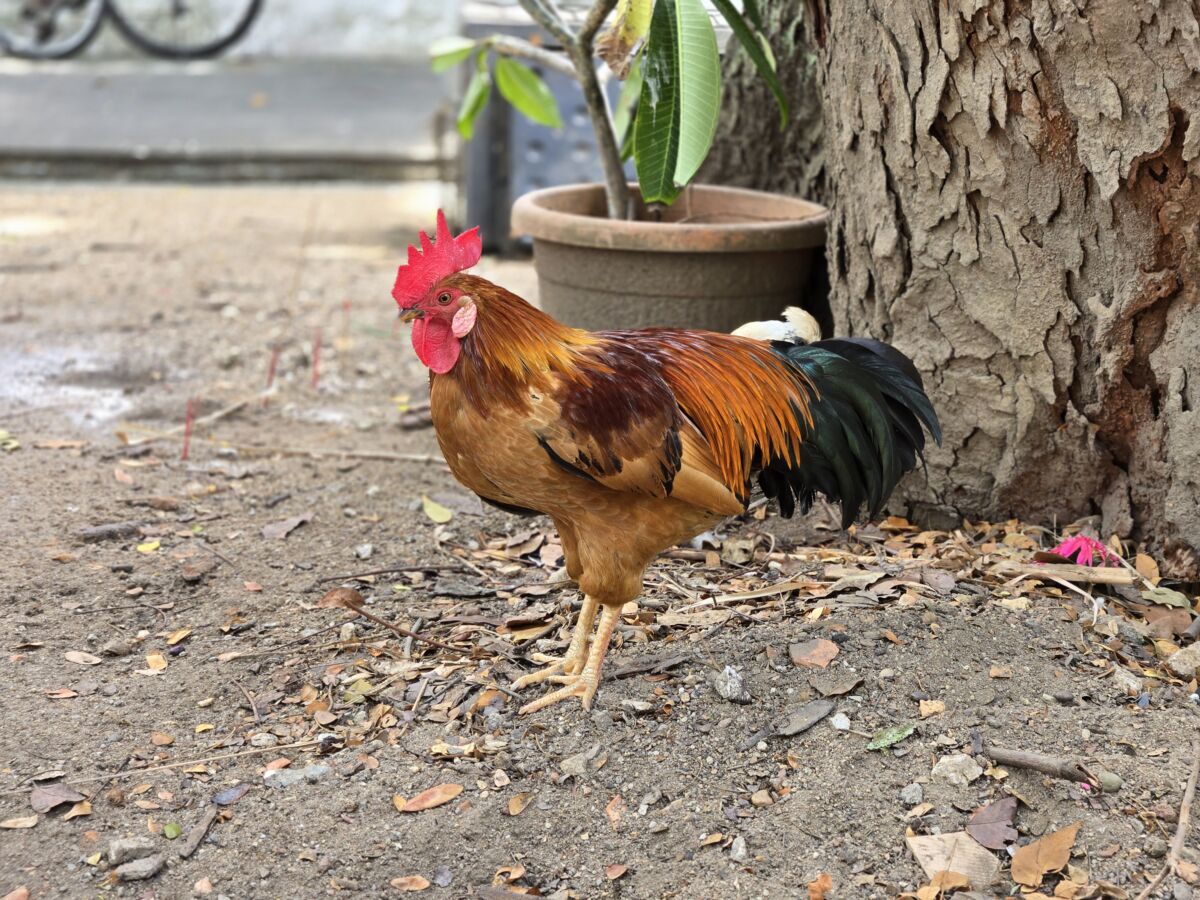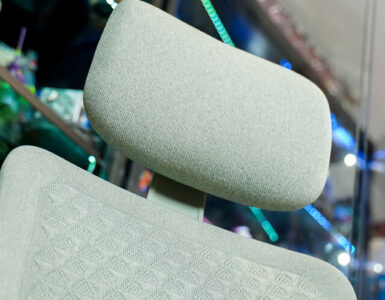Being the first isn’t always all that’s cut out to be. Disrupting industry trends takes courage, but it also opens the door to criticisms and disappointment in the same breath – a situation that has left its mark on Samsung. After all, the South Korean firm arguably pioneered the modern foldable phone category, ushering in a new era of tech which saw competitors following in its footsteps.

Five iterations later, its latest is still just one step closer to becoming the holy grail of phone-tablet hybrids. The Samsung Galaxy Z Fold 6, sibling to the Z Flip 6, is an engineering marvel that slips nicely into its dual roles, proving excellent at masquerading as a traditional smartphone while doubling as a tablet. There’s just a small hitch – it barely brings anything new into the, well, fold, despite costing S$150 more than its predecessor.
The price hike isn’t a good look, but the minimal approach does align with the range’s “less is more” philosophy, where small and useful upgrades take precedence over groundbreaking tech. Here, the refinement is immediately evident, with the device being the most streamlined, lightweight, and slim ever.
Much of the design heavy lifting was previously done by the fifth-generation model, and its successor builds on it in the ways that matter. A svelte charmer, the Galaxy Z Fold 6 sports a more compact form factor, measuring 153.5 x 68.1 x 12.1mm when folded and shaving off 14 grams. It now weighs 239 grams, as compared to 250 grams, and is only 7g heavier than the S24 Ultra flagship – the difference can certainly be felt in the hand, making it a comfortable grip, even for individuals with smaller hands.



All things considered, it feels fairly similar to using a traditional smartphone, albeit with a narrower and longer slab. The slightly bigger Dynamic AMOLED 2X cover screen, coming in at 6.3 inches (versus 6.2 inches previously), is easy on the eye, offering a more symmetrical read across a wider expanse, be it texting or rifling through emails.
The pocket-friendly nature of its clamshell build is certainly welcome, and the same goes for its flattened, matte aluminum sides that minimise the effort needed to open up the display. The grip is partially helped by the matte finish on its rear, which reduces the slippery notes and exudes an air of sophistication. Like most of its contemporaries, the Galaxy Z Fold 6 is a smudge magnet, but the fingerprints aren’t as unsightly since they fade into the background. Smears on the secondary panel, though, is a different matter and necessitates regular cleaning.
Opening it up reveals a 7.6-inch AMOLED 2X main display packing a refresh rate of 120Hz and a 2,160 x 1,856 resolution. Alongside the 2,367 x 968 resolution on the cover screen, transitioning from clamshell to tablet proves to be cohesive, with both panels sharing a peak brightness of 2,600 nits. On paper, they appear to be sufficiently bright, but a photo walk at Haji Lane in Singapore yielded an illegible experience under direct sunlight, even at maximum brightness.

Weight distribution also feels more even here, bringing a balanced touch that improves one-handed use. The hinge offers just the right amount of resistance, although the extra heft still requires a little more effort than usual to clutch onto, and may cause some finger cramping to occur. As expected of a flagship, if specialised, offering, viewing content continues to be an enjoyable experience with lively, accurate colours, crisp detail, rich contrast, and deep blacks. The refresh rate, meanwhile, ensures fluid and sharp visuals.
The unconventional 22:9 aspect ratio will take some getting used to, since most apps aren’t optimised for its squarish presentation. It’s common for owners to encounter black bars along the frame, possibly leading to a break in immersion, or a compressed user interface that extends to gaming titles. Across Zenless Zone Zero, Honkai: Star Rail, and Final Fantasy VII Ever Crisis, all in-game elements appear squashed, occupying a layout unfamiliar to muscle memory. The change is very manageable, however, and won’t affect gameplay in any way.
On that note, Samsung’s newest foldable has established itself as a highly-competent gaming machine, which comes as no surprise. The latest Qualcomm Snapdragon 8 Gen 3 chip offers impressive oomph, allowing it to breeze through all three titles without visible frame rate drops or stuttering. While it can run a little hot near the metal spine, cooling kicks in fairly quickly and proves efficient for prolonged gaming sessions.
The crease, no longer a persistent concern, blends seamlessly into the display when viewed head-on, with an almost imperceptible bump down the middle. For the most part, it only really appears when the screen turns black, or at certain angles. Like its contemporaries with a protruding or chunky camera setup, the Galaxy Z Fold 6 cannot be placed flat on a surface, so a stand or holder will come in handy.

As a smartphone-slash-tablet hybrid, it presents the best of both worlds – increased screen real estate for work and play, as well as a portable form that the latter lacks. The lineup has always found its crown jewel in this versatility, and it’s no different here. Multitasking in split screen mode brings a smooth, convenient experience, while navigation between different apps remains snappy and lag-free, courtesy of the upgraded processor.
The bigger head-turner, though, is the slate of artificial intelligence (AI) capabilities available. Much like the rest of the industry, Samsung is no less immune to the AI enamourment, and has packed several features, both old and new, into the phone. For starters, users can use Note Assist to translate and summarise notes, and Circle to Search to access Google by circling, highlighting, scribbling, or tapping any image, video, or text without switching apps.
A nifty addition to these existing tools is Interpreter, the company’s own app that allows for real-time translation and conversations. Here’s how it works: put the Galaxy Z Fold 6 in flex mode (read: bent halfway), press a button near the top of the inner screen, and the translated text will show up on the cover display once Google Translate runs its course.

Being able to see translations at the same time should prove especially useful during travel, more so since a network connection isn’t required here, but there are flaws in the execution. Similar to the scenario with its Z Flip 6 sibling, the act of having to look at the display constantly while conversing feels unnatural, as human interaction relies heavily on behavioral cues like eye contact, non-verbal gestures, and more. Additionally, the software isn’t refined enough to filter out unrelated audio, oftentimes detecting speech from other passers-by in crowded settings. The Interpreter tool is a great concept, so Samsung’s inability to fully harness its potential comes across as unfortunate.


Elsewhere, Sketch to Image is capable of generating an image based on a sketch in the Notes or Gallery app. Simple lines are sufficient for Galaxy AI to get the job done, and users have a few options to pick from, though results are fairly inconsistent. It’s an issue that carries over to photos as well – the feature can add photorealistic elements to existing images, with all AI-altered visuals distinguished by an automatic “AI-generated content” watermark. In real-world tests, a rough sketch of a flower was turned into a tray of eggs, before settling into a frangipani after three attempts.
Where some of these AI-powered tools are handy for day-to-day use, particularly in the area of productivity, others could do with more polish and serve as by-the-way bells and whistles more than anything else, which isn’t necessarily a fault. Still, the entire suite isn’t exclusive to the Galaxy Z Fold 6 and can be found on Samsung’s other flagship devices, dulling some of the shine.

It’s a little disappointing, too, that the camera array remains identical to its predecessor, considering the price hike. Like before, the device boasts a 12-megapixel (MP) ultrawide camera, a 50MP main shooter, and a 10MP phone camera on its rear, alongside the following offerings:
- 4MP Under Display camera
- 10MP Cover Camera
- 10MP selfie camera

The only difference here is that the ultrawide sensor has been tailored for improved night performance, but casual photographers will find all their bases mostly covered. Captured photographs are vivid and bright, with the company’s improved ProVisual Engine delivering great clarity and sharp detail in both indoor and outdoor settings. The selfie shooter is decent, doing what it sets out to do.












Saturation is less natural, sporting the signature over-infused Samsung flair that differentiates it from Apple offerings and other Android models. Reducing the slightly exaggerated warm tones – as compared to previous iterations, at least – is welcome; what’s not is the 3x optical zoom, which produces noise and some loss in detail. In low-light or dark environments, the camera is also susceptible to flare, and it’s a bummer that Samsung’s most expensive phone doesn’t have more to offer in terms of mobile photography (the S24 Ultra, for comparison, touts a 200MP camera and up to 10x optical zoom).



With an unchanged 4,400 mAh battery, the Galaxy Z Fold 6 is able to power through a typical eight-hour work day. While individual mileage will vary due to various factors, such as brightness levels and the frequency of using the internal display, it dropped to around 25 percent from a full charge after 12 hours of moderate use on average. The activity breakdown for this window includes short bursts of gaming, browsing social media and news websites, replying in chat apps like Telegram and WhatsApp, watching videos, and listening to music, so the runtime isn’t too shabby.

Charging speeds are a different matter, however. Similar to its predecessor, the tablet-smartphone hybrid supports 25-watt wired charging, which lags behind the competition, as well as the Galaxy S24+ and S24 Ultra line. A 30-minute charge with a quick-charge cable juices it up from zero to around 40 percent, with 15W wireless charging and reverse wireless charging coming in as alternatives. The speed isn’t poor per se – it just doesn’t quite justify the premium pricing.
Alas, the Samsung Galaxy Z Fold 6 falls into well-heeled territory. The soaped-up foldable starts at S$2,548 for the base model (12GB RAM + 256GB storage) and can go up to S$3,099 (12GB RAM + 1TB ROM), claiming a spot in the upper echelons of the consumer market. There’s no denying the truly impressive prowess at work, from its lightweight design and versatile functionality to snappy performance, that makes it one of the most well-rounded foldable phones around and a worthy successor to the Galaxy Z Fold 5.

But the sticker shock is a tough pill to swallow. Between minimal hardware changes and the lack of AI features unique to the device, there’s little value and incentive to make the jump. Those willing to unfold a load of notes can expect a top-notch investment, though it seems Samsung might have to tighten their “less is more” approach the next time, as more competition seeks to close the gap.
GEEK REVIEW SCORE
Summary
Samsung’s foldable powerhouse is a highly competent refinement of its predecessor’s best parts, packing lightweight versatility and delightful performance. Unfortunately, the premium price tag is its biggest enemy.
Overall
8.3/10-
Aesthetics - 8.5/10
8.5/10
-
Build Quality - 9/10
9/10
-
Performance - 8.5/10
8.5/10
-
Value - 7/10
7/10
-
Geek Satisfaction - 8.5/10
8.5/10












